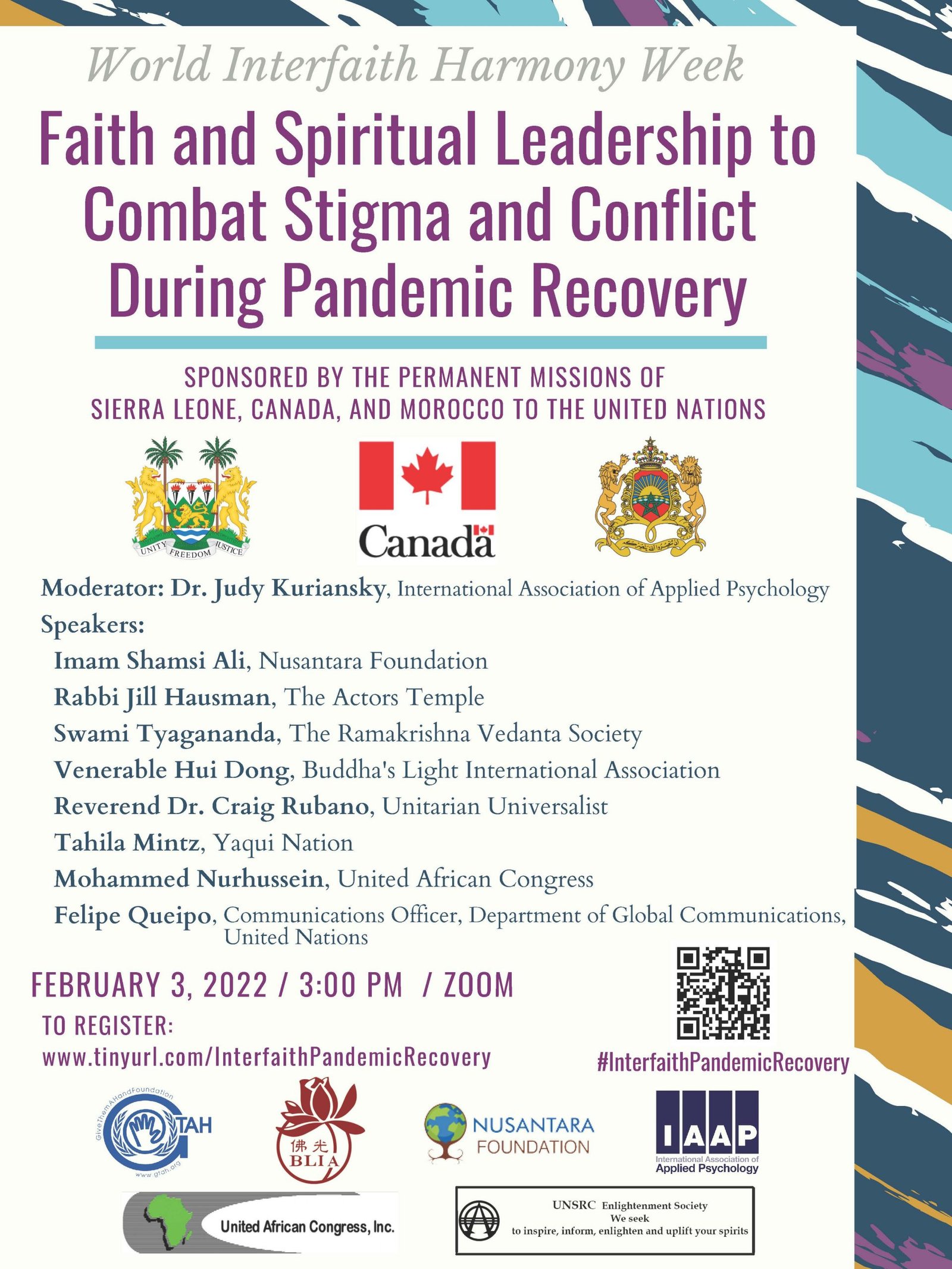New York, 31 January 2022 (TDI): Following the General Assembly’s designation in 2010, World Interfaith Harmony Week is observed each year during the first week of February.
In an effort to promote harmony between all people, regardless of their faith, the General Assembly established World Interfaith Harmony Week as a means to enhance mutual understanding and interreligious dialogue.
As the General Assembly recognizes the imperative need for dialogue among different faiths and religions to enhance mutual understanding, harmony, and cooperation between people, it encourages all states to spread interfaith harmony and goodwill in their churches, mosques, synagogues, temples, and other places of worship during that week, on a voluntary basis and according to their own religious traditions or convictions.

Origin and timeline
In 2010, King Abdullah II of Jordan proposed World Interfaith Harmony Week (WIHW) at the UN in an effort to promote a culture of peace and nonviolence. It was quickly adopted by the UN General Assembly (resolution A/RES/65/5), establishing the first week of February as World Interfaith Harmony Week and calling on governments, institutions, and civil society to participate in observances that would further the objectives of WIHW.
» 4 things to know about World Interfaith Harmony Week https://t.co/Ob1yf9KAYS
— WIHW (@wihw) January 27, 2022
2012
The United African Congress conference theme was “The Diaspora: A Force for Positive Change,” emphasizing the ability of diverse immigrant communities in the United States to coexist peacefully, united by shared values, love of God, and love of neighbour.
Christian, Muslim, Jewish, Hindu, and Buddhist leaders spoke on the teachings of their respective faiths that are relevant to peace and harmony. The Permanent Mission of the Federal Democratic Republic of Ethiopia to the United Nations co-sponsored the forum.
2013
In 2013, they invited a spiritual leader from Guinea to participate, who brought with him the faith and value systems of indigenous peoples. He stressed the necessity for people to live in peace as well as the interdependence of humans with nature, which makes good stewards of the environment essential. Diplomats at the UN and a wide range of invited guests took great interest in his participation.
2014
WIHW 2014 was dedicated to Nelson Mandela, who led South Africa during its transition from Apartheid to a thriving multicultural, all-inclusive democracy and prevented a potentially catastrophic racial war.
To promote peace among his people, his personal example of forgiveness resonated throughout the world. It was co-sponsored by the Indonesian Mission to the UN and the Ethiopian Mission to the UN.
2015
New York City was devastated by Hurricane Sandy, which destroyed many homes. Following the flooding of homes and food distribution in affected communities, the United African Congress and its partners organized hundreds of interfaith volunteers to assist.
The theme of the 2015 WIHW program was “Interfaith Prayer, Healing, and Community Services in the Cause of Peace” in recognition of the power of prayer and interfaith collaboration.
People of different religions, colours, and ethnicities came together for the common good in this case. The UN Missions in Ethiopia, Indonesia, and Jamaica were among the co-sponsors.
Hope and Healing On Faith Week Agenda https://t.co/y8BccfRbva via @calgaryherald
— WIHW (@wihw) January 30, 2022
2016
The United Nations launched the Sustainable Development Goals in 2016. Furthermore, this was the year when one of the worst global health emergencies, the Ebola pandemic that devastated Guinea, Sierra Leone, and Liberia, was winding down after killing more than 11,000 people.
As early as August 2014, the United African Congress organized an awareness-raising forum at the UN, which was followed by a concert at the General Assembly Hall in March 2015.
As global health emergencies like Ebola spread across boundaries and with the UN 2030 agenda for Sustainable Development Goals, the theme for the 2016 World Interfaith Harmony Week was “Building Bridges across Boundaries.”
To emphasize the significance of the theme, they invited a Native American spiritual leader, the ceremonial ritualist from the Mohawk Nation, to participate with the other faith leaders.
The Native American speaker imparted through chants and dance the importance of protecting Mother Earth, which nurtures and sustains us.
2019
Every faith tradition and faith system recognizes that we are all in this together and that we need to love and support each other in order to live in harmony and peace in an environmentally sustainable world.
We continue to live in a world racked by conflict and intolerance, with an increasing number of refugees and internally displaced people forced to live in an unwelcoming and hostile environment.
Unfortunately, messages of hatred are also spreading among people. There has never been a greater need for spiritual guidance. A message shared by all faith traditions calls for doubling our efforts to promote good neighbourhood behaviour.
As a result, Interfaith Harmony Week 2019 had the theme “Sustainable Development through Interfaith Harmony.”





